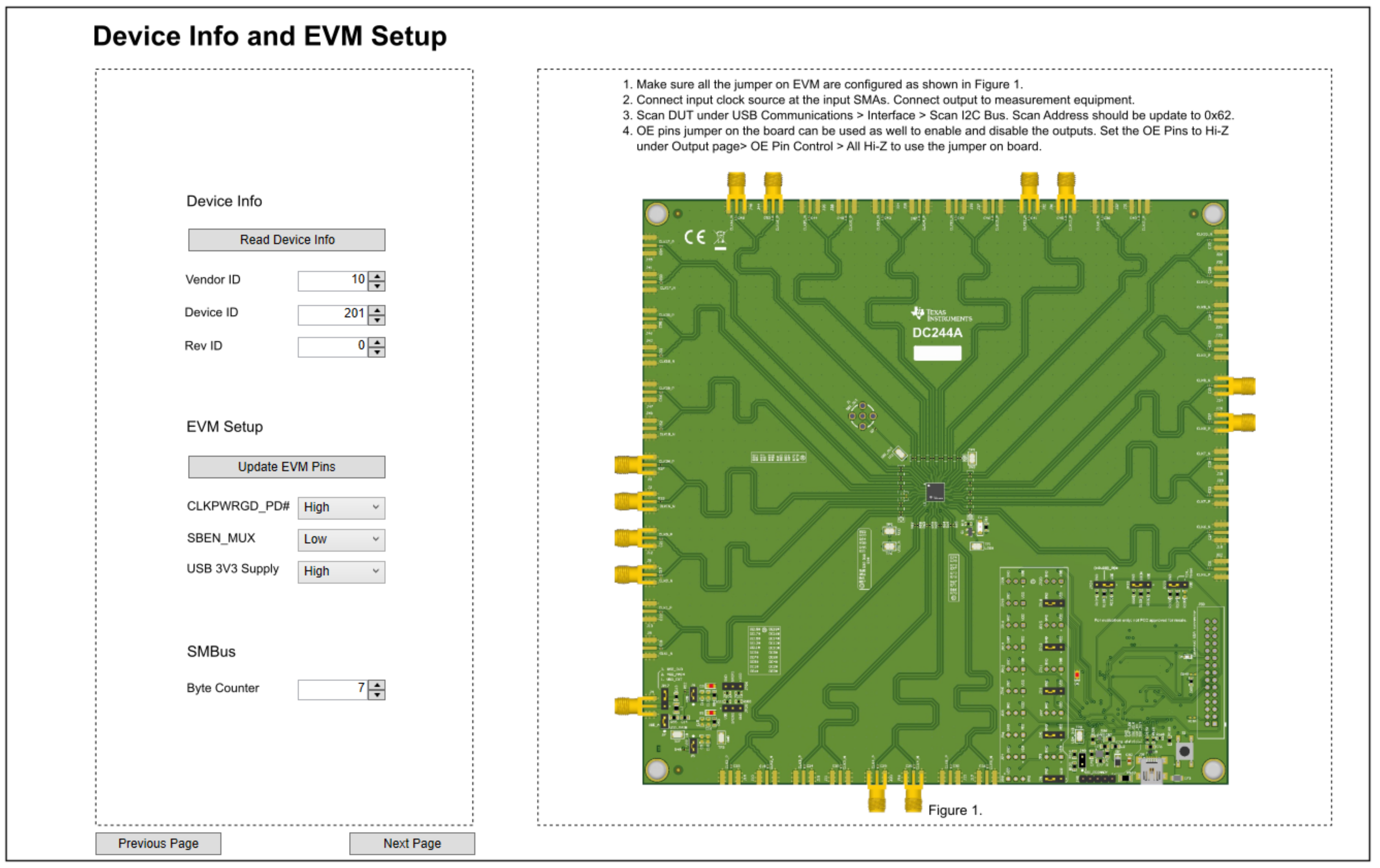SNAU298 October 2023
3.2.2 Device Info
The Device Info page contains three different sections and LMKDB1120EVM information.
This section contains following information related to device which can be read back using Read Device Info button.
- Vendor ID
- Device ID
- Rev ID
 Figure 3-4 Device Info
Figure 3-4 Device Info